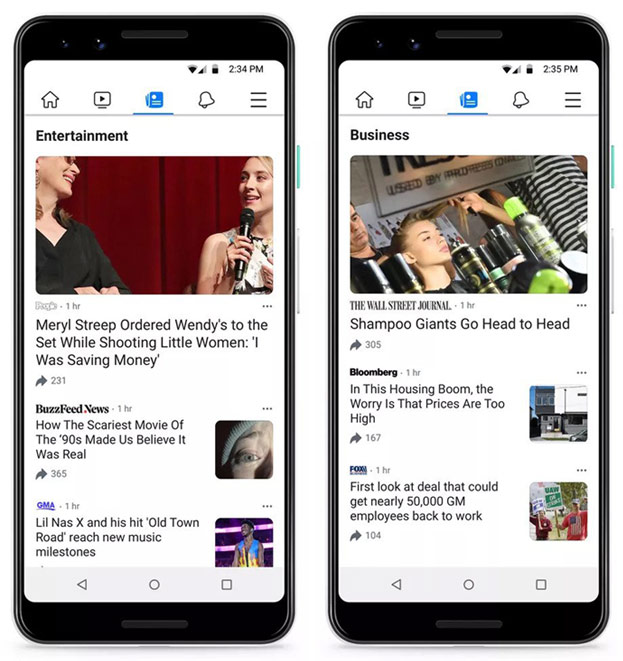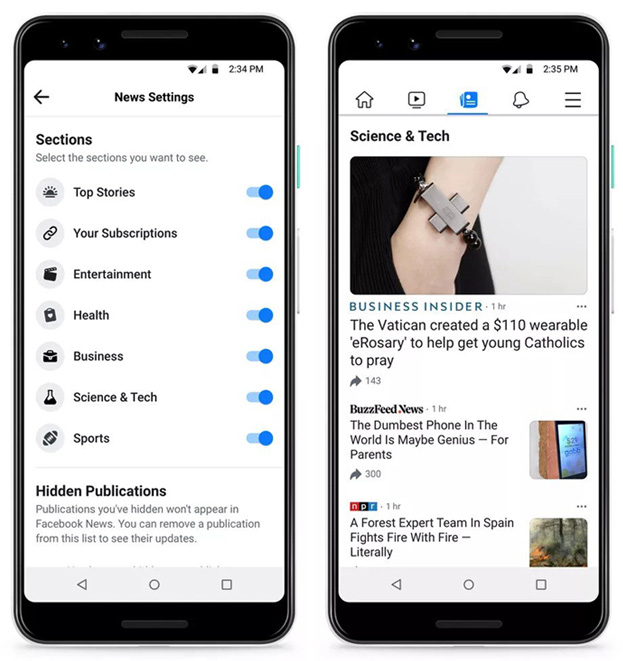
When there is more users and money to to be made on the internet, Facebook is probably one of the first to be at the front line.
In the past, the social media giant has prioritized news in its News Feed, eliminated human curators, deprioritized them in favor of live videos. But with more people relying on the web for news, Facebook is again back in the news business, with an initiative it calls 'Facebook News'.
Initially launched to a selected audience in the U.S., it takes the form of a dedicated home screen tab, which allows users to explore news of their interest, directly from the Facebook app.
"Facebook News was built to bring people closer to the stories that affect their lives," the company said. "We’ll continue to learn, listen and improve News as it rolls out more broadly."
Founder and CEO Mark Zuckerberg this Facebook News as "a big initiative around news and journalism where we’re partnering with a lot of folks to build a new product that’s supporting high-quality journalism."

The key features in Facebook News include:
- Today’s Stories chosen by a team of journalists.
- Personalization based on the news users read, share and follow.
- Topic sections where users can dive deeper into different news categories.
- Your Subscriptions, a section for users who have linked their paid news subscriptions to their Facebook account.
- Controls to hide articles, topics and publishers users don’t want to see.
To populate Facebook News, the social media giant is collaborating with a number of big publishers, including The Wall Street Journal, The New York Times, The Washington Post, Bloomberg, Business Insider, and BuzzFeed.
To these media titans, Facebook is paying them handsomely - $3 million a year for three-year deals, according to Vox - for making their journalism available to Facebook.
As for how it's surfacing the news, Facebook understands the dangers of algorithmic curation for serving personalized news. In the past, its AI-powered feed has surfaced misleading contents for more than plenty of times.
And here, the company acknowledges that machine learning has its limits.
This is why it is putting humans into the mix.
Read: Facebook Again Relies On Humans To Spot Problems Before They Happen

In the human part, Facebook has assembled a "diverse team of journalists" who are "free from editorial intervention by anyone at the company." They are tasked with highlighting the biggest news stories of the day, while the rest will be chosen a machine-learning algorithm that tailors to readers’ interests over time.
“We need the news to scrutinize the powerful, reliably document major events and uncover new truths,” Zuckerberg noted. “This makes our society better, and I know from firsthand experience it has made our company better, too — even when it’s uncomfortable.”
This way, the company expects algorithmic personalization and human curators can help it drive Facebook News to the better.
Facebook is not alone in the new aggregation business. Search giant Google and iPhone maker Apple have their own news products, both of which offer a wide variety of stories from an array of publishers. And not to mention the many smaller news aggregation apps available in the market.
In the past, many people were disappointed by Facebook. Publishers too felt that their reputations have been stained, as Facebook's algorithms occasionally show misleading contents.
As much as those people and businesses were affected in a bad way, Facebook's spotty track record with distributing news cannot be overlooked.
With the social media's colossal reach, too many people are relying on its products on a daily basis. With a huge audience to begin with, Facebook in re-entering the news business shows that the past has forgiven its sins.
